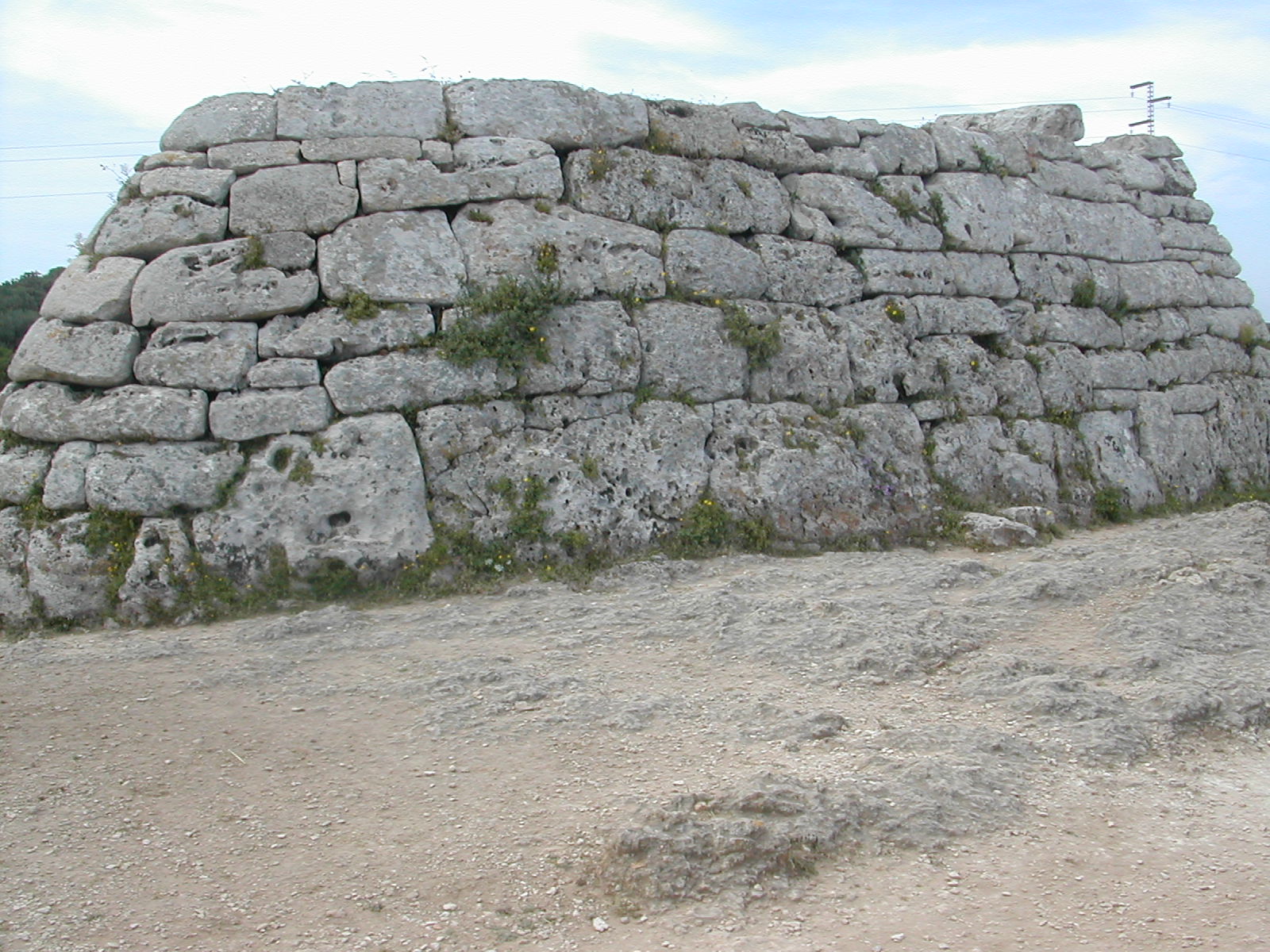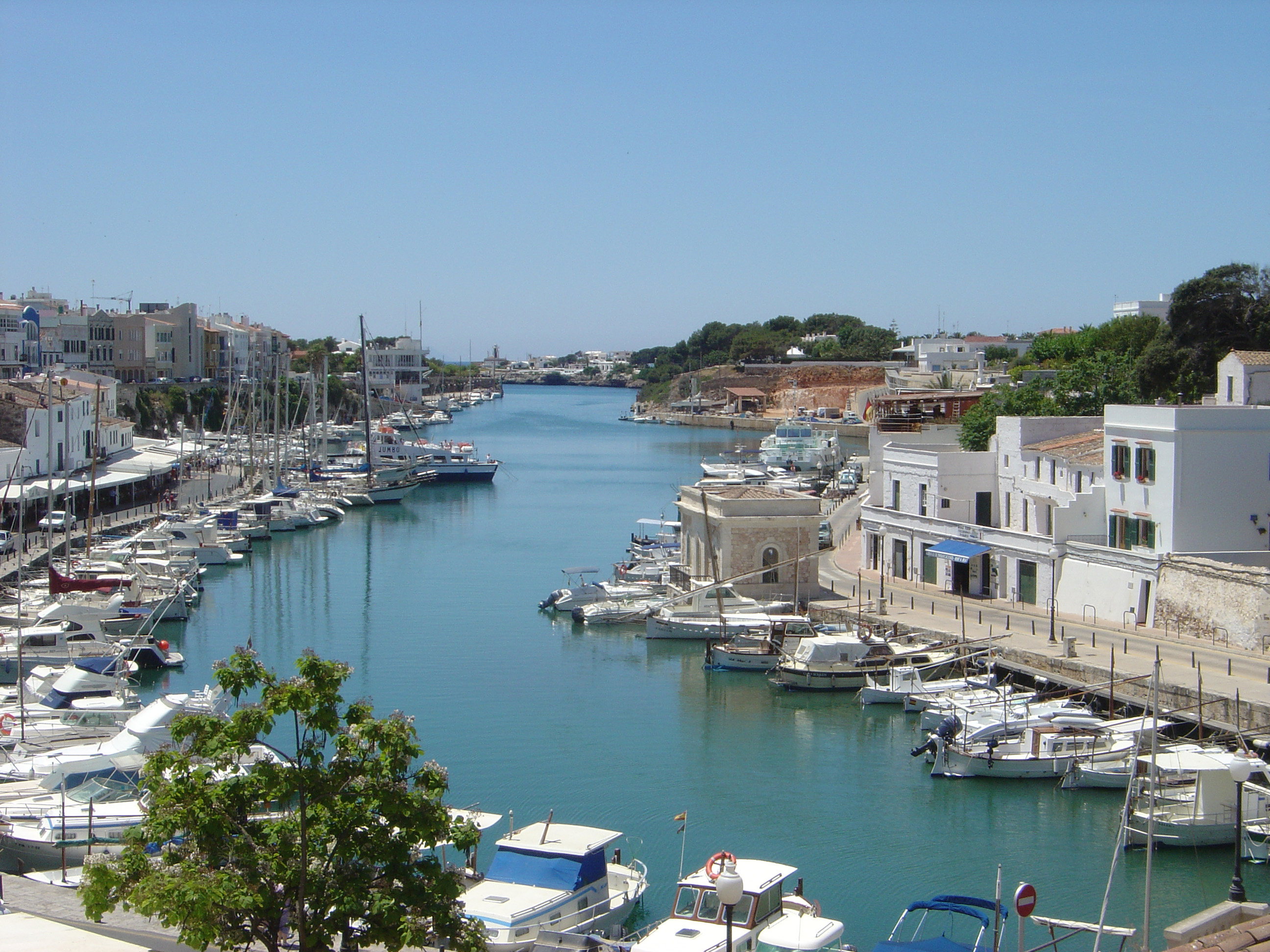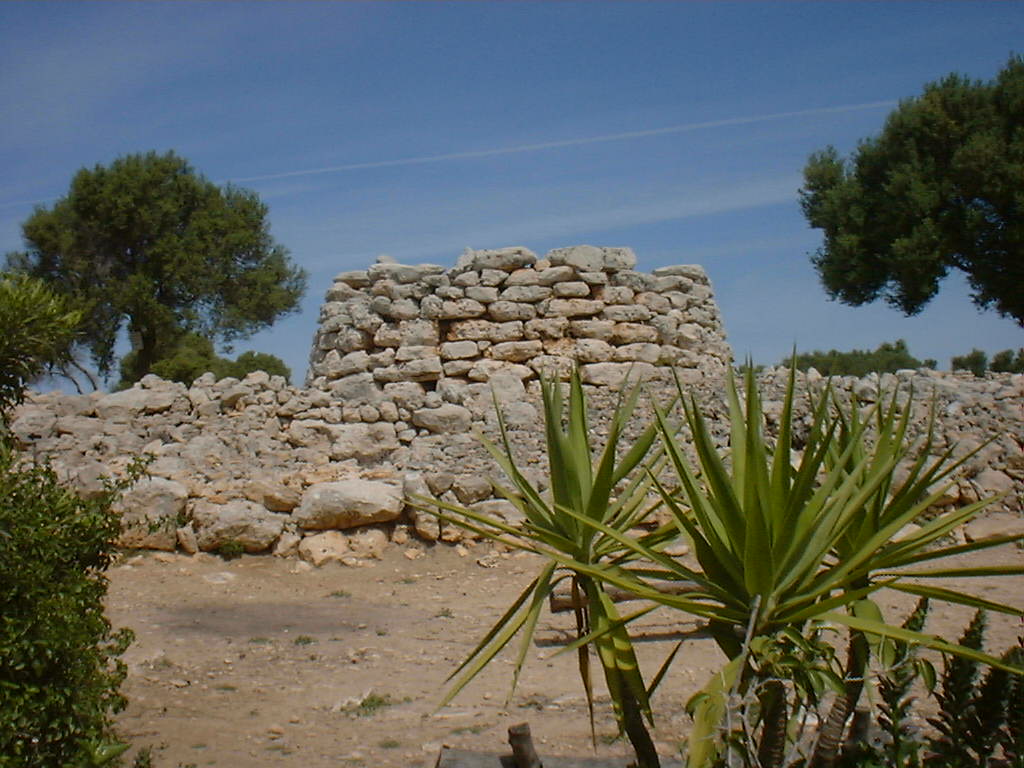|
Menorca
Menorca or Minorca (from , later ''Minorica'') is one of the Balearic Islands located in the Mediterranean Sea belonging to Spain. Its name derives from its size, contrasting it with nearby Mallorca. Its capital is Maó, situated on the island's eastern end, although Menorca is not a province and forms a political union with the other islands in the archipelago. Ciutadella de Menorca, Ciutadella and Maó are the main ports and largest towns. Menorca had a population of 102,477 at the Census of 1 January 2025, Its highest point, called El Toro (Minorca), El Toro (from Catalan "''turó''" meaning ''hill''), roughly in the middle of the island, is Above mean sea level, above sea level. History The island is known for its collection of European megalithic culture, megalithic stone monuments: naveta, ''navetes'', taula, ''taules'' and ''talaiots'', which indicate very early prehistoric human activity. Some of the earliest culture on Menorca was influenced by other Mediterran ... [...More Info...] [...Related Items...] OR: [Wikipedia] [Google] [Baidu] |
Talaiot
A talaiot, or talayot (), is a Bronze Age megalith found on the islands of Menorca and Majorca forming part of the Talaiotic Culture or Talaiotic Period. Talaiots date back to the late second millennium and early first millennium BC. There are at least 274 of them, in, near, or related to Talaiotic settlements and the Talaiotic chamber tombs known as navetas. Talaiots pre-date the megalithic structures known as taulas, which are usually found nearby. While some Talaiots are thought to have had a defensive purpose, the use of others is not clearly understood. Some believe them to have served the purpose of lookout or signalling towers, as on Menorca, where they form a network. Talaiots generally take the form of circular or square buildings, and they may have been used as dwellings or meeting places. The talayots on Menorca have been much less prone to weathering than the ones found on Majorca. Despite this, very few grave goods have been found in Menorcan talayots, leading histor ... [...More Info...] [...Related Items...] OR: [Wikipedia] [Google] [Baidu] |
Balearic Islands
The Balearic Islands are an archipelago in the western Mediterranean Sea, near the eastern coast of the Iberian Peninsula. The archipelago forms a Provinces of Spain, province and Autonomous communities of Spain, autonomous community of Spain, with Palma de Mallorca being its capital and largest city. Formerly part of the Kingdom of Majorca, Kingdom of Mallorca, the islands were made a province in the 19th century provincial division, which in 1983 received a Statute of Autonomy of the Balearic Islands, Statute of Autonomy. In its later reform of 2007, the Statute designates the Balearic Islands as one of the ''nationalities and regions of Spain, nationalities'' of Spain. The official Languages of Spain, languages of the Balearic Islands are Catalan language, Catalan and Spanish language, Spanish. The archipelago islands are further grouped in western Pityusic Islands, Pytiuses (the largest being Ibiza and Formentera), and eastern Gymnesian Islands, Gymnesians (the largest bein ... [...More Info...] [...Related Items...] OR: [Wikipedia] [Google] [Baidu] |
Naveta
{{Short description, Megalithic tomb A naveta (also known as funerary naveta or burial naveta) is a form of megalithic chamber tomb unique to the Balearic Islands, Balearic island of Menorca. They were built during the Bronze Age, between the Pre-Talayotic period and the beginning of the Talayotic period. Despite their resemblance to residential navetas, they served a very different function and do not share an entirely synchronous chronology. The largest example is the Naveta d'Es Tudons which is around 4m high, 14m long and 6.4m wide. The first author who wrote about these structures was Juan Ramis in his book ''Celtic antiquities on the island of Menorca'', which was edited in 1818, it being the first book in the Spanish language entirely devoted to prehistory. Structures preceding the funerary navetas In recent years, some researchers have proposed that the ''funerary navetas'' are an evolution of earlier funerary structures located in the southeastern area of the island� ... [...More Info...] [...Related Items...] OR: [Wikipedia] [Google] [Baidu] |
Ciutadella De Menorca
Ciutadella de Menorca () or simply Ciutadella is a town and a municipalities of Spain, municipality in the western end of Menorca, one of the Balearic Islands (Spain). It is one of the two primary cities in the island, along with Maó. History It was founded by the Carthaginians, and became the seat of a bishop in the 4th century. After being governed by the Moors under the names of ''Medīna el Jezīra'' () and ''Medīna Menūrqa'' (مدينة منورقة) for several centuries, Ciutadella was recaptured during the reconquista by men serving Alfonso III of Aragon, Alfonso III and became part of the Crown of Aragon. During the Middle Ages, it became an important trading center. On 9 July 1558, the Turks under Piyale Pasha and Turgut Reis with a powerful Turkish Armada of 140 ships and 15,000 soldiers, put the town under siege for eight days entered and decimated the town. The town was defended by only a few hundred men. All of Ciutadella's 3,099 inhabitants who survived the sie ... [...More Info...] [...Related Items...] OR: [Wikipedia] [Google] [Baidu] |
Taula
A taula (meaning 'table' in Catalan language, Catalan) is a Stonehenge-esque stone monument found on the Balearic Islands, Balearic island of Menorca. Taulas can be up to 5 metres high and consist of a vertical pillar (a monolith or several smaller stones on top of each other) with a horizontal stone lying on it. A U-shaped wall often encloses the structure. They were built by the Talaiotic culture between 500 BC and 300 BC. Their exact cultural meaning remains unknown, but they probably had religious and/or astronomical purposes. Most of the taulas face south, which seems to suggest some astronomical meaning. Archeologist Michael Hoskin has suggested the taulas may have been part of an ancient healing cult. They are frequently found near talaiots. The first author who wrote about these structures was Juan Ramis in his book ''Antigüedades célticas de la isla de Menorca'' ("Celtic Antiquities of the Island of Menorca"), which was published 1818, being the first book in the Sp ... [...More Info...] [...Related Items...] OR: [Wikipedia] [Google] [Baidu] |
Taifa Of Menorca
The Taifa of Menorca () was a medieval Islamic taifa kingdom vassal to the Crown of Aragon, which existed from 1228 until 1287, when the latter conquered it. It was ruled by the Arabs of the Banu Khazraj tribe. List of Emirs Hakamid dynasty * Abu Sa'id Utman: c. 1228/9?–1281 * Abu 'Umar: 1281–1287 See also * List of Sunni Muslim dynasties 1287 disestablishments in Europe States and territories established in 1228 Menorca Menorca or Minorca (from , later ''Minorica'') is one of the Balearic Islands located in the Mediterranean Sea belonging to Spain. Its name derives from its size, contrasting it with nearby Mallorca. Its capital is Maó, situated on the isl ... History of Menorca {{Al-Andalus-stub ... [...More Info...] [...Related Items...] OR: [Wikipedia] [Google] [Baidu] |
El Toro (Minorca)
El Toro in Catalan, sometimes known by its Spanish name of Monte Toro, is the tallest hill of the island of Menorca, rising to an elevation of above mean sea level. The mountain is home to the Sanctuary of the ''Verge del Toro''. The mountain's summit can be reached by car or on foot, from which there is a fantastic view of almost the entire island and even the mountains of Mallorca on a clear day. El Toro is designated as an ANEI (protected natural area). Etymology The name "Toro" is an evolution, in part for the different languages and cultures that have passed in the island, of the Catalan (Menorquí) word "Turó", which means Hill A hill is a landform that extends above the surrounding terrain. It often has a distinct summit, and is usually applied to peaks which are above elevation compared to the relative landmass, though not as prominent as Mountain, mountains. Hills .... The name could also be derived from Arabic, coming from ''tor'' or ''al-tor'' which means ' ... [...More Info...] [...Related Items...] OR: [Wikipedia] [Google] [Baidu] |
Mallorca
Mallorca, or Majorca, is the largest of the Balearic Islands, which are part of Spain, and the List of islands in the Mediterranean#By area, seventh largest island in the Mediterranean Sea. The capital of the island, Palma, Majorca, Palma, is also the capital of the autonomous communities of Spain, autonomous community of the Balearic Islands. The Balearic Islands have been an autonomous region of Spain since 1983. There are two small islands off the coast of Mallorca: Cabrera, Balearic Islands, Cabrera (southeast of Palma) and Dragonera (west of Palma). The anthem of Mallorca is "La Balanguera". Like the other Balearic Islands of Menorca, Ibiza, and Formentera, the island is a highly popular holiday destination, particularly for tourists from the Netherlands, Republic of Ireland, Ireland, Germany, and the United Kingdom. The international airport, Palma de Mallorca Airport, is one of the busiest in Spain; it was used by 28 million passengers in 2017, with use increasing ever ... [...More Info...] [...Related Items...] OR: [Wikipedia] [Google] [Baidu] |
Taifa Of Dénia
The taifas (from ''ṭā'ifa'', plural ''ṭawā'if'', meaning "party, band, faction") were the independent Muslim principalities and kingdoms of the Iberian Peninsula (modern Portugal and Spain), referred to by Muslims as al-Andalus, that emerged from the decline and fall of the Umayyad dynasty, Umayyad Caliphate of Córdoba between 1009 and 1031. They were a recurring feature of al-Andalus history. The ''taifas'' were eventually incorporated by the Almoravid dynasty in the late 11th century and, on its collapse, many ''taifas'' re-appeared only to be incorporated by the Almohad Caliphate. The fall of the Almohads resulted in a flourishing of the ''taifas'', and this was the case despite constant warfare with Christian kingdoms. Taifa kings were wary of calling themselves "kings", so they took the title of ''hajib'', presenting themselves as representatives for a temporarily absent caliph. The ''taifa'' courts were renowned centres of cultural excellence in which poets, scien ... [...More Info...] [...Related Items...] OR: [Wikipedia] [Google] [Baidu] |
Mediterranean Sea
The Mediterranean Sea ( ) is a sea connected to the Atlantic Ocean, surrounded by the Mediterranean basin and almost completely enclosed by land: on the east by the Levant in West Asia, on the north by Anatolia in West Asia and Southern Europe, on the south by North Africa, and on the west almost by the Morocco–Spain border. The Mediterranean Sea covers an area of about , representing 0.7% of the global ocean surface, but its connection to the Atlantic via the Strait of Gibraltar—the narrow strait that connects the Atlantic Ocean to the Mediterranean Sea and separates the Iberian Peninsula in Europe from Morocco in Africa—is only wide. Geological evidence indicates that around 5.9 million years ago, the Mediterranean was cut off from the Atlantic and was partly or completely desiccation, desiccated over a period of some 600,000 years during the Messinian salinity crisis before being refilled by the Zanclean flood about 5.3 million years ago. The sea was an important ... [...More Info...] [...Related Items...] OR: [Wikipedia] [Google] [Baidu] |
European Megalithic Culture
A megalith is a large stone that has been used to construct a prehistoric structure or monument, either alone or together with other stones. More than 35,000 megalithic structures have been identified across Europe, ranging geographically from Sweden in the north to the Mediterranean Sea in the south. The word was first used in 1849 by the British antiquarian Algernon Herbert in reference to Stonehenge and derives from the Ancient Greek words " mega" for great and " lithos" for stone. Most extant megaliths were erected between the Neolithic period (although earlier Mesolithic examples are known) through the Chalcolithic period and into the Bronze Age. Types and definitions While "megalith" is often used to describe a single piece of stone, it also can be used to denote one or more rocks hewn in definite shapes for special purposes. It has been used to describe structures built by people from many parts of the world living in many different periods. The most widely known ... [...More Info...] [...Related Items...] OR: [Wikipedia] [Google] [Baidu] |







